A Simulationist's Framework for Business Analysis
R.P. Churchill
CBAP, IIBA-CBDA, PMP, CSPO, CSMLean Six Sigma Black Belt
www.rpchurchill.com/presentations/SimFrameForBA

Moschitta-Hawking Scale







|
30 Years of Simulation
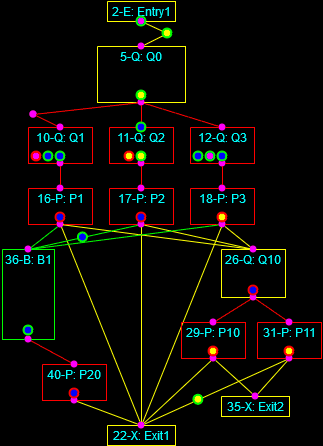
Continuous simulation of the heating of a square billet and Discrete-Event simulation of a multi-phase process.
30 Years of Simulation
|
Industries
|
|
|
Why do so many business analysis activities look so different?
- If you talk to different BAs they often seem to be doing very different things.
- Job ads seem to vary quite a lot.
- I've surveyed five groups of BAs now. They report a lot of things in common, but a lot of things that are different, too.
Structure of the BABOK
Chapter 1: Introduction (structure of the BABOK)
Chapter 2: Key Concepts (basic context of business analysis)
Chapters 3-8: Knowledge Areas (the basic flow of what gets done)
Chapter 9: Underlying Competencies (Analysis, Behavior, Domain Knowledge, Communication, Interaction, Tools/Tech)
Chapter 10: Techniques (50)
Chapter 11: Perspectives (Agile, BI, IT, Business Architecture, Process Management)
Appendices
Unified Theory of Business Analysis
R.P. Churchill
CBAP, PMP, CSPO, CSM, CSDLean Six Sigma Black Belt
The Framework:
- Project Planning
- Intended Use
- Assumptions, Capabilities, and Risks and Impacts
- Conceptual Model (As-Is State)
- Data Sources, Collection, and Conditioning
- Requirements (To-Be State: Abstract)
- Functional (What it Does)
- Non-Functional (What it Is, plus Maintenance and Governance)
- Design (To-Be State: Detailed)
- Implementation
- Test
- Operation, Usability, and Outputs (Verification)
- Outputs and Fitness for Purpose(Validation)
- Acceptance (Accreditation)
- Project Close
The Framework: Simplified
 Intended Use
Intended Use Conceptual Model (As-Is State)
Conceptual Model (As-Is State) Data Sources, Collection, and Conditioning
Data Sources, Collection, and Conditioning Requirements (To-Be State: Abstract)
Requirements (To-Be State: Abstract)- Functional (What it Does)
- Non-Functional (What it Is, plus Maintenance and Governance)
 Design (To-Be State: Detailed)
Design (To-Be State: Detailed) Implementation
Implementation Test
Test- Operation, Usability, and Outputs (Verification)
- Outputs and Fitness for Purpose (Validation)
BABOK Knowledge Areas vs. Bob's Framework
| Bob's Technique | Business Analysis Planning and Monitoring | Elicitation and Collaboration | Requirements Life Cycle Management | Strategy Analysis | Requirements Analysis and Design Definition | Solution Evaluation | Requirements per BABOK |
| Project Planning | X | x | |||||
| Intended Use | x | X | x | x | x | Business Requirements | |
| Assumptions, Capabilities, Limitations, and Risks & Impacts | x | X | x | ||||
| Conceptual Model (As-Is State) |
x | X | X | ||||
| Data Sources, Collection, and Conditioning | x | X | |||||
| Requirements (To-Be State: Abstract) |
x | X | X | x | X | Stakeholder Requirements | |
| Design (To-Be State: Concrete) |
x | x | X | X | Solution Requirements (Functional and Non-Functional) |
||
| Implementation | x | X | x | X | x | x | Transition Requirements |
| Test Operation and Usability (Verification) |
x | X | |||||
| Test Outputs (Validation) |
x | x | X | ||||
| Acceptance (Accreditation) |
x | X | |||||
| Project Close | X | x |
Customer Feedback Cycle
Review every phase with the customer until they agree it's correct, especially for the Conceptual Model (As-Is State).
Needs discovered later could require the creation of earlier elements.
This framework is usable for both Waterfall and Scrum, and really for any management style.

Context of Your Effort

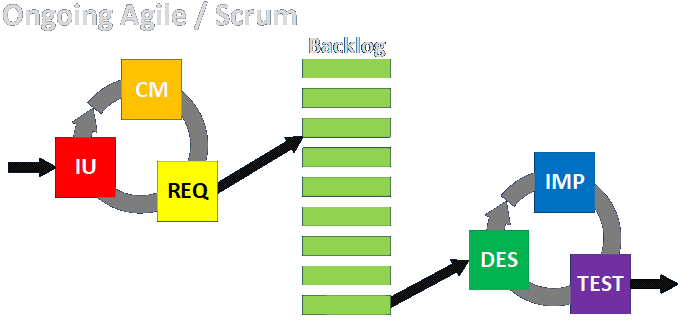

|
|
Link to detailed discussion.
Context of Your Effort (continued)



|
|
Link to detailed discussion.
Different Teaming Concepts
- Temperament (from Communicating with Leaders):
Coach (Heart), Facilitator, Executor (Hands), Driver, Visionary (Head), Champion
Participants see to aspects of the engagement.
- SDLC Cross-Functional Areas (discussion here):
Business Value, User Experience, Process Performance, Development Process, System Value, System Integrity, Implementation, Application Architecture, Technical Architecture
Participants see to non-functional requirements aspects of the solution.
- Specific Roles:
Sponsor (Product Owner), Team Lead (Architect), ScrumMaster, Developer, DBA, UI/UX Designer, Graphic Artist, Tester, Business Analyst, Specialists in Security/Deployment/Documentation
Participants see to functional requirements aspects of the solution.
- Anything Else You Can Make Up! What have you seen?
Nature of the Problem and Its Solution
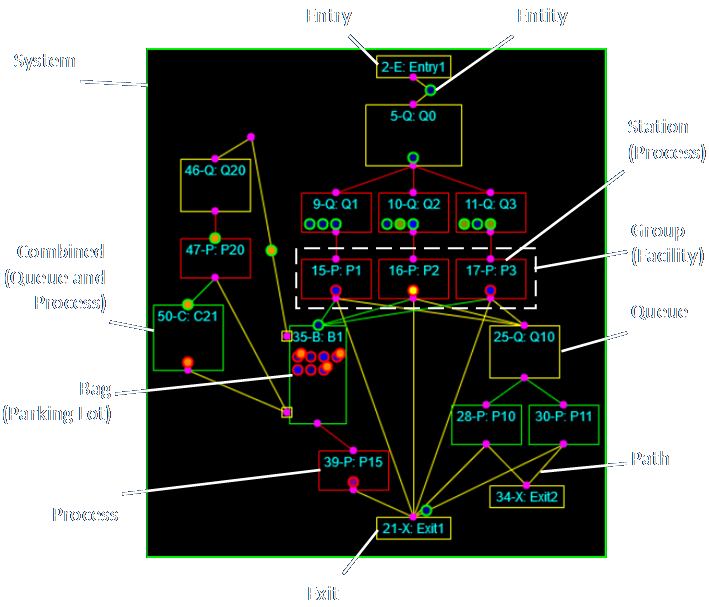
- What are the possible parts of the solution?
- How can they be broken down and analyzed?
- Are there commonalities between the parts?
Link to detailed discussion.
The Solution vs. The Engagement

|

|
How much of either process are you a part of?
Link to detailed discussion.
The 50 Techniques
|
|
|
Link to detailed discussion.
Software Tools
| 24 | Excel | Both |
| 14 | Jira | Engagement |
| 14 | Visio | Solution |
| 13 | Word | Both |
| 8 | Confluence | Both |
| 7 | Outlook | Engagement |
| 6 | SharePoint | Engagement |
| 5 | Azure DevOps | Solution |
| 4 | Team Foundation Server | Engagement |
| 4 | PowerPoint | Engagement |
| 3 | Engagement | |
| 3 | Google Docs | Engagement |
| 2 | MS Dynamics | Engagement |
| 2 | Visual Studio | Solution |
| 2 | Notepad | Both |
| 2 | OneNote | Engagement |
| 2 | SQL Server | Solution |
Software greatly aids sharing and communications, so BAs will concentrate on this. However, a huge amount of solutioning will be aided by specific, technical software or will be software, with which BAs will tend to be less involved.
Link to detailed discussion. Link to survey results.
Are You Thinking About Non-Functional or Functional Requirements?

What it IS or what it DOES?
That is, if everything isn't a process, what is your context?
Hint: Everything involves a process, even if it only involves the does-ness of identifying and creating an is-ness.
Phases of the Engagement In Detail
Project Planning
Sets up and kicks off the project using traditional project management techniques.
Considers intended management framework (Waterfall, Agile, Kanban, etc.) and special requirements for the effort (existing assets/PMO, identify stakeholders).
This step is bookended by a Project Closeout step at the end of the effort.
 Intended Use
Intended Use
This defines the customer's goals for what the new or modified process or system will accomplish.
It may describe technical and performance outcomes but must ultimately be expressed in terms of business value.
Each goal can be described in terms of:
- Key Questions - questions to be answered
- Application - decisions to be made
- Outputs and Data - specific outputs to be generated
This information is included in the Project Charter from the PMBOK.
Assumptions, Capabilities, and Risks & Impacts
Define the scope of the project and what capabilities and considerations will and will not be included.
Describe the risks inherent in the effort and the possible impacts of risk items occurring.
Reasons to omit features and capabilities:
- Outside of natural or organizational boundaries
- Insufficient data or understanding
- Impact on results is small (benefit not worth cost)
- Components aren't active in modes being investigated
 Conceptual Model (As Is State)
Conceptual Model (As Is State)
If an existing process is to be modified, improved, or automated, discover all operations and data items. This defines the As Is State. (In simulation this is known as building a Conceptual Model.)
If there is not an existing process, work backwards from the desired outcomes to determine what operations and data are required.
Map out the discovered process and document and collect data and parameters for each operation and communication.
The conceptual model is not a specific type of drawing, but is a representation of an existing system using any appropriate techniques.
Iteratively review the maps, data, and descriptions with customers and SMEs until all parties agree that understanding is accurate and complete!
 Data Sources, Collection, and Conditioning
Data Sources, Collection, and Conditioning
Refers to input items (nouns) processed, not parameters (adjectives) that describe the operation and characteristics of the system.
Map sources, sinks, and messages to Conceptual Model.
Data sources (or assumptions) must be found that support the generation of all required output data items. Trace backwards from desired outputs to required inputs and calculations.
Items must be validated for accuracy, authority, and obtainability.
Interfaces should be abstract initially (e.g., with management and through initial discovery and scoping), and then detailed in design and implementation with proper SMEs.
Ensure that data and flags, states, formats, and metadata are captured in sufficient detail. Work with implementation SMEs as needed.
Link to detailed discussion
 Requirements (To-Be State: Abstract)
Requirements (To-Be State: Abstract)
Functional
- What the system DOES
- Describes components, behaviors, entities, actions, inputs, and outputs.
- Contains the details of the design the user sees and the mechanisms that generate results.
Non-Functional
- What the system IS
- Describes qualities (in terms of "-ilities," e.g., reliability, modularity, flexibility, robustness, maintainability, scalability, usability, and so on).
- Describes how the system is maintained and governed.
- Describes how the system is hosted.
The requirements include the criteria by which functional and non-functional elements will be judged to be acceptable.
This represents the To-Be State in abstract terms.
All items in the requirements should map to items in the Conceptual Model in both directions. This mapping is contained in the Requirements Traceability Matrix (RTM), which can be implemented in many ways.
 Design (To-Be State: Concrete)
Design (To-Be State: Concrete)
The design of the system is a description of how the system will be implemented and what resources will be required.
The design of the system also includes plans for maintenance and governance going forward.
All elements of the design must map in both directions to all elements of the Conceptual Model and Requirements via the Requirements Traceability Matrix (RTM).
BAs may or may not participate in the design of the system directly, but must absolutely ensure that all elements are mapped to previous (and subsequent) elements via the RTM.
 Implementation
Implementation
This phase is where the implementation is actually carried out, based on the design.
Implementation also means deployment.
Alternatively, deployment and delivery, and even handover, could be considered to be a new phase after testing.
 Test
Test
Operation and Usability (Verification)
- Tests to ensure the system operates as intended.
- This process ensures that the system:
- makes sense to the users
- enables manipulation of all relevant elements
- prevents and corrects errors
- maintains users' situational awareness
- includes documentation, training, and help
- These types of tests are most able to be automated.
Outputs (Validation)
- Tests to confirm the accuracy of the results produced.
- Ensure simulation behavior matches real-world system for known cases
- Validation of results may be:
- Objective, e.g., measured comparisons to known values in a simulation or calculation
- Subjective, e.g., judged as "correct" by SMEs for novel situations and realizations of business value
- The outputs are what provide the business value of the solution.
Additional information about Verification and Validation here.
 Test (continued)
Test (continued)
All elements of the test plan and results must map in both directions to all previous elements in the Requirements Traceability Matrix (RTM).
Specialized test SMEs may conduct the majority of system testing, but implementors, managers, customers, maintainers, and end users should all be involved.
Provisions for testing, V&V, and quality should be built into the process from the beginning.
Link to detailed discussion.
Acceptance (Accreditation)
This phase ensures that the customer's plans and criteria for acceptance are met. All of the stated acceptability criteria must be addressed.
This plan must include the process for handing the system or process over to the customer (internal or external). This process may include documentation, training, hardware, software, backups, licenses, and more.
The customer is the final judge of acceptance and may make three judgments:
- Full Acceptance
- Partial Acceptance with Limitations
- Non-Acceptance
Clarification: Conceptual Model through Design
The Intended Use drives everything.
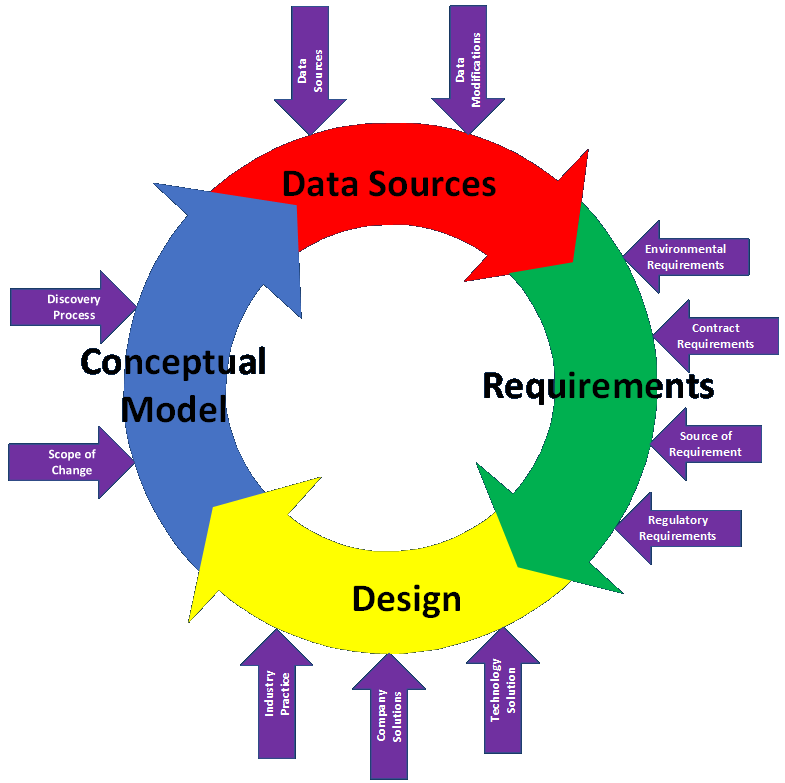
Discovery vs. Data Collection
Discovery is a qualitative process. It identifies nouns (things) and verbs (actions, transformations, decisions, calculations).
Data Collection is a quantitative process. It identifies adjectives (colors, dimensions, rates, times, volumes, capacities, materials, properties).
Discovery comes first, so you know what data you need to collect.
Imagine you're going to simulate or automate the process. What values do you need? This is the information the implementation teams will need.
Context of Discovery
Elicitation is discovering the customer's needs. Discovery is about mapping the customer's existing process.

If there is no existing process, i.e., a new (greenfield) process is being built from scratch, then a form of discovery will occur during Requirements and Design.
Link to detailed discussion.
Process Mapping
- Describes what comes in, where it goes, how it's transformed, and what comes out.
- Describes the movement and storage of information, material, people, and other entities.
- Maps define the scope of a process. Links to connected processes or "everything else" are called interfaces.
- Are presented at the level of detail that makes sense.
- Process elements within maps can themselves be processes with their own maps.
- State, timing, and other data can be included.
- Entities in a process can be split and combined.
- Processes and entities may be continuous or discrete.
Process Mapping (continued)
Processes may be mapped differently based on needs, industry standards, and the information to be represented.
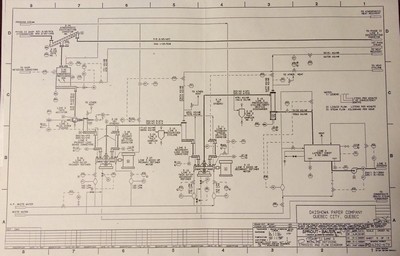
|
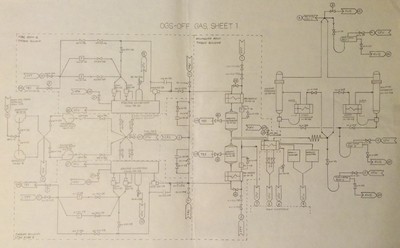
|
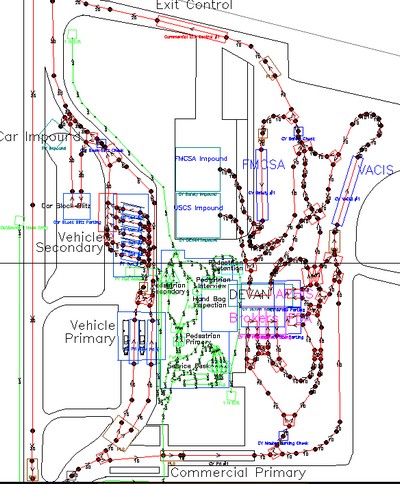
|
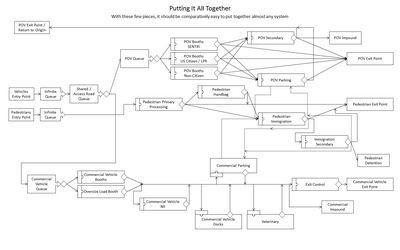
|
Mechanical Pulping Mill, Quebec City, QC
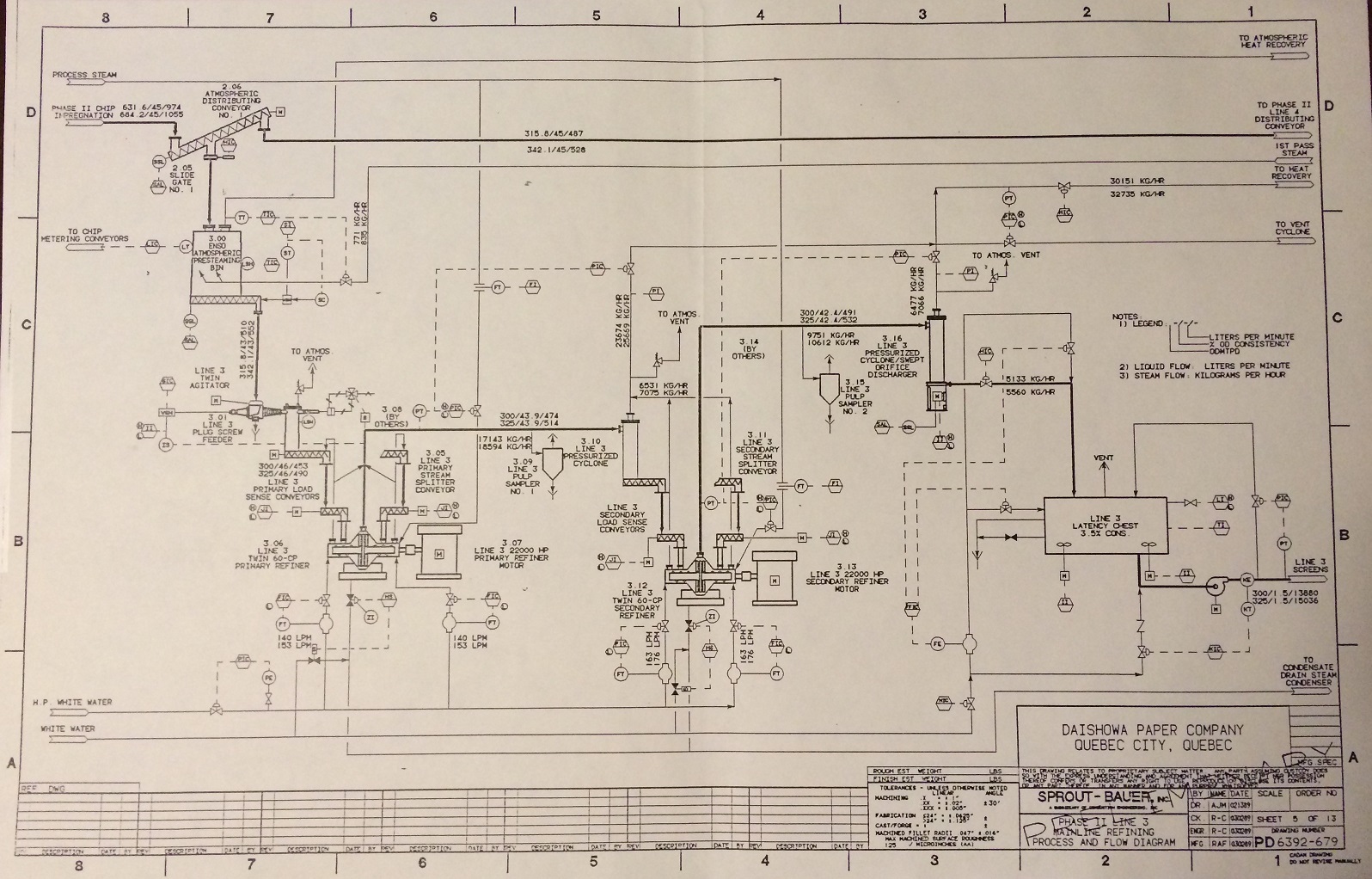
Offgas System in BWR Nuclear Power Plant, Richland, WA
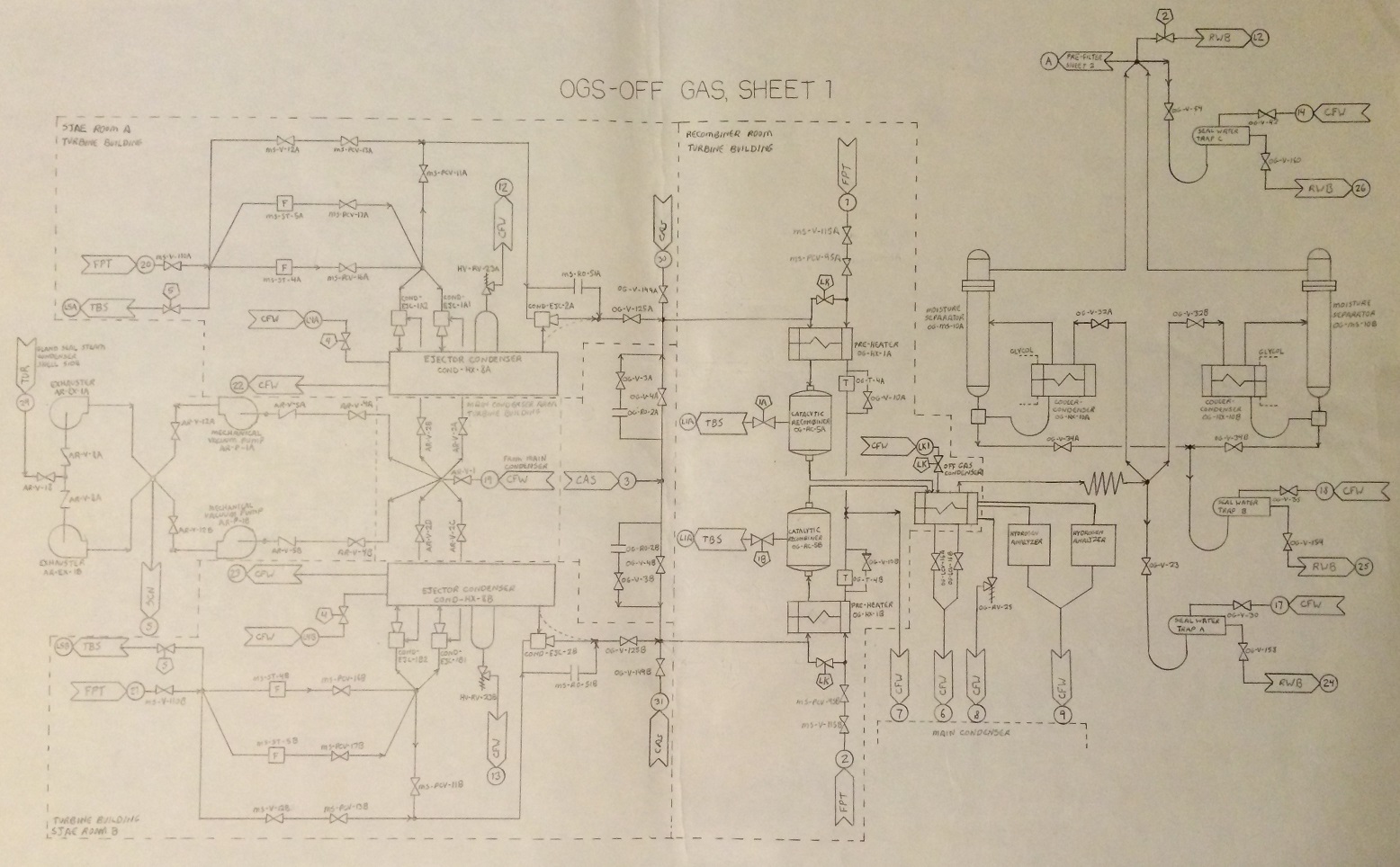
Land Border Port of Entry, Columbus, NM

Architecture Study: General Purpose Discrete-Event Simulation
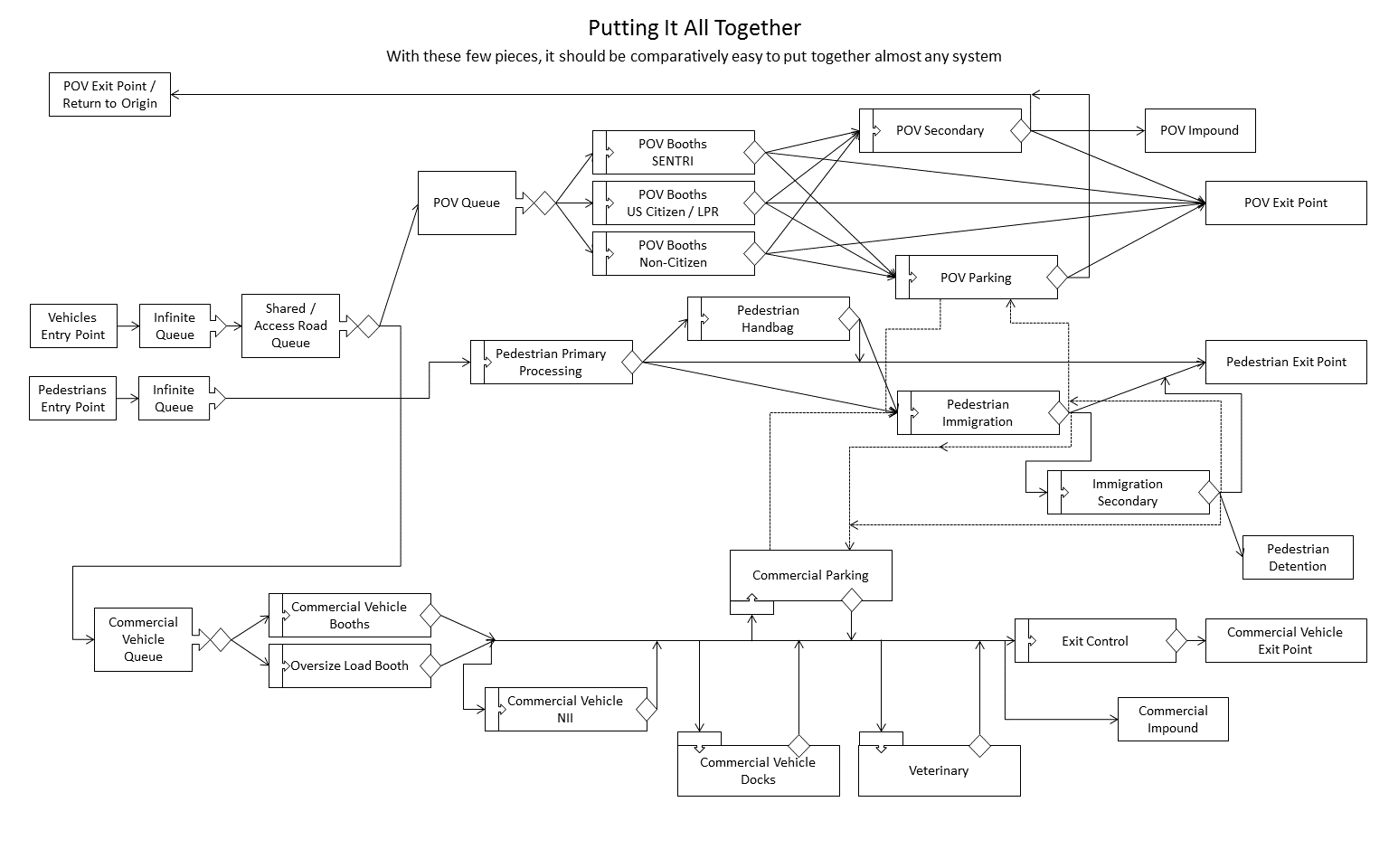
Process Mapping (continued)
- S-I-P-O-C vs. C-O-P-I-S
- Any number of inputs and outputs are possible.
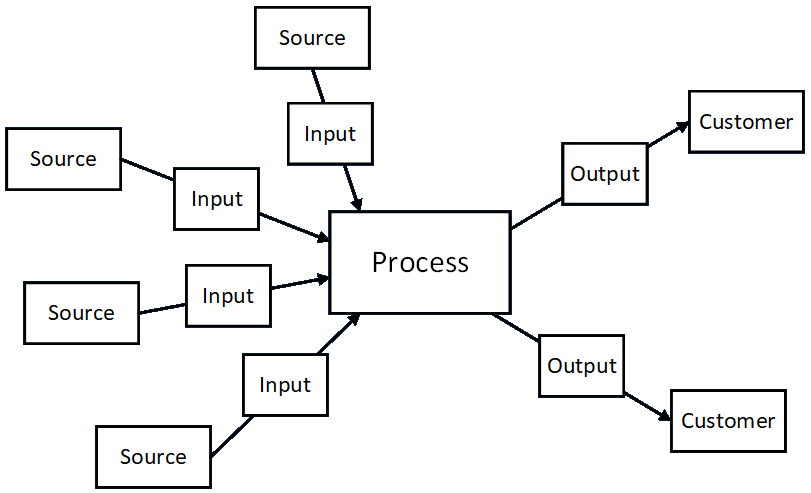
Process Mapping (continued)
I give specific names to modular components.

Link to detailed discussion.
Data Collection (Process Characterization)
- Captures qualitative descriptions of entity types and characteristics, process types and characteristics, and decisions made.
- Captures quantitative data:
- physical dimensions, volumes, and storage capacities
- arrival and departure rates and times
- diversion percentages (what parts of outputs go where)
- process durations
- whatever is needed to describe transitions
- counts or quantities of what's stored
- velocities, frequencies, and fluxes
- number of stations in each sub-process
Link to detailed discussion.
Data Collection (Process Characterization) (continued)
- Walkthroughs: guided and unguided (Waste Walk)
- Drawings, Documents, Manuals, Specifications
- Electronic Collection (real-time vs. historical, integrated vs. external sensors)
- Visual / In-Person (notes, logsheets, checklists, mobile apps)
- Interviews (with SMEs)
- Surveys
- Video
- Photos
- Calculations
- Documented Procedures and Policies
Data collection corresponds to the Observation technique in the BABOK. Methods include:
Domain Knowledge Acquisition
- Domain knowledge is acquired from prior experience or training or from the process SMEs as you go.
- What you need to know to:
- capture process details
- analyze the operations
- perform calculations
- make sure you don't miss anything
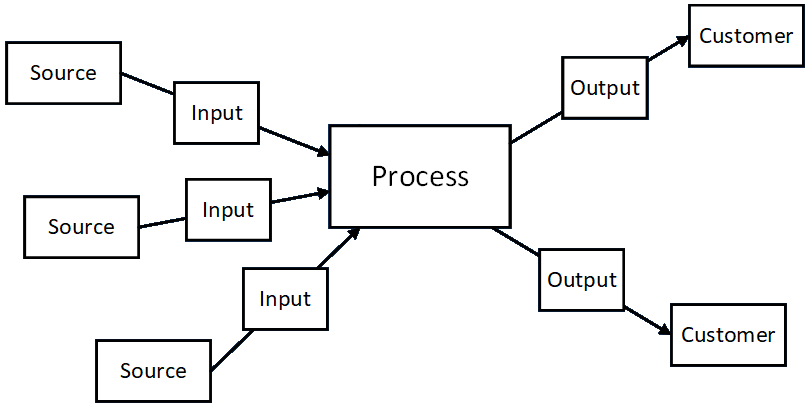
Link to detailed discussion.
Requirements Traceability Matrix
- Best represented by a relational data structure but any method will work.
- Needs discovered later could require the creation of earlier elements.
- Methodological requirements (at bottom) can each be thought of as a kind of non-functional requirement that doesn't need to be mapped.
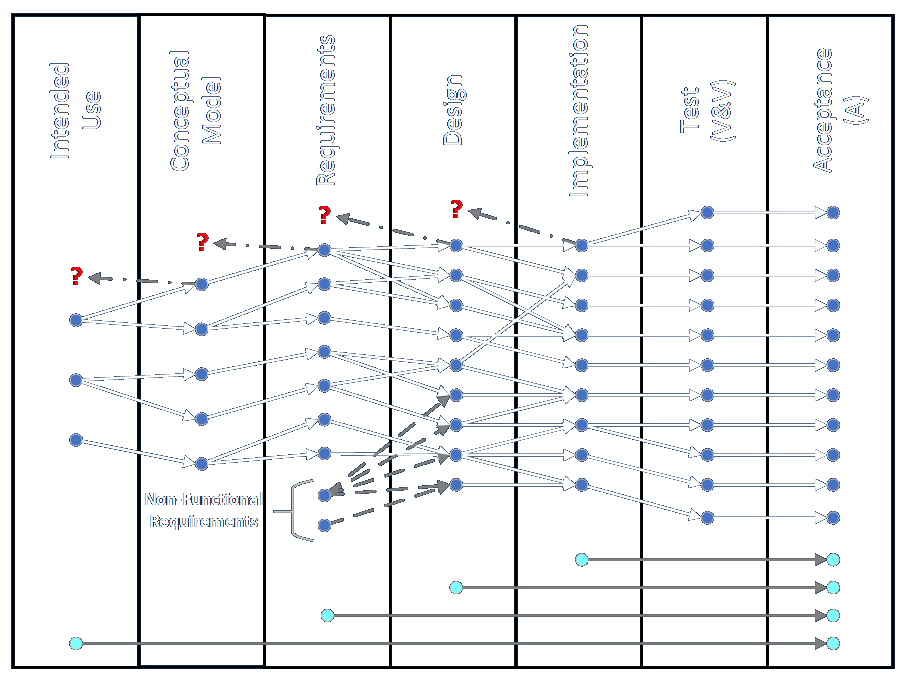
Link to detailed discussion.
Example Simulation
Simple pass-through simulation using basic component types.
Scope and Scale of the Project/Simulation Effort
The process described includes the greatest amount of detail. All projects and efforts perform all of these steps implicitly, but some may be streamlined or omitted as the size of the effort scales down.
The entire process takes place implicitly or explicitly even if any one participant or group only sees a small fraction of the activity.
Link to detailed discussion.
Context of the Project/Simulation Effort
Usually best for processes that have a defined beginning and end. Continuous discovery, data collection, redefinition of requirements, update of design, and reimplementation can be carried out for ongoing, reactive, support and maintenance operations.
Works in Waterfall, Agile, and other project management environments.
The framework does not inhibit the ability to explore and test multiple options.
Making Sure The Analysis Is Thorough

- Consider all elements from all angles.
- UML is a formal example. The BABOK is more diffuse.
- Simulation is great for understanding because the results show if everything's included.
- Formal mathematical proofs of correctness and optimality exist for some problems.
- Customer review and realized results are the best proof for most BA engagements.
IVV&A Inspiration for the Framework
Tell 'em what you're gonna do. Do it. Tell 'em what you did.
| Accreditation Plan | V&V Plan | V&V Report | Accreditation Report |
| Executive Summary | Executive Summary | Executive Summary | Executive Summary |
| 1. Problem Statement | 1. Problem Statement | 1. Problem Statement | 1. Problem Statement |
| 2. M&S Requirements and Acceptability Criteria | 2. M&S Requirements and Acceptability Criteria | 2. M&S Requirements and Acceptability Criteria | 2. M&S Requirements and Acceptability Criteria |
| 3. M&S Assumptions, Capabilities, Limitations, and Risks & Impacts | 3. M&S Assumptions, Capabilities, Limitations, and Risks & Impacts | 3. M&S Assumptions, Capabilities, Limitations, and Risks & Impacts | 3. M&S Assumptions, Capabilities, Limitations, and Risks & Impacts |
| 4. Accreditation Methodology | 4. V&V Methodology | 4. V&V Task Analysis | 4. Accreditation Assessment |
| 5. Accreditation Issues | 5. V&V Issues | 5. V&V Recommendations | 5. Accreditation Recommendations |
| 6. Key Participants | 6. Key Participants | 6. Key Participants | 6. Key Participants |
| 7. Planned Accreditation Resources | 7. Planned V&V Resources | 7. Actual V&V Resources Expended | 7. Actual Accreditation Resources Expended |
| 8. V&V Lessons Learned | 8. Accreditation Lessons Learned | ||
| Suggested Appendices | Suggested Appendices | Suggested Appendices | Suggested Appendices |
| A. M&S Description | A. M&S Description | A. M&S Description | A. M&S Description |
| B. M&S Requirements Traceability Matrix | B. M&S Requirements Traceability Matrix | B. M&S Requirements Traceability Matrix | B. M&S Requirements Traceability Matrix |
| C. Basis of Comparison | C. Basis of Comparison | C. Basis of Comparison | C. Basis of Comparison |
| D. References | D. References | D. References | D. References |
| E. Acronyms | E. Acronyms | E. Acronyms | E. Acronyms |
| F. Glossary | F. Glossary | F. Glossary | F. Glossary |
| G. Accreditation Programmatics | G. V&V Programmatics | G. V&V Programmatics | G. Accreditation Programmatics |
| H. Distribution List | H. Distribution List | H. Distribution List | H. Distribution List |
| I. Accreditation Plan | I. V&V Plan | I. Accreditation Plan | |
| J. Test Information | J. V&V Report |
Process Improvement
- Incremental improvement vs. Quantum Leap (The Big Kill!)
- Center to target and reduce variation (Six Sigma)
- Rearrangement and Compression (Lean)
- Substitution / Elimination / Automation
- Modify a sub-process and see how it affects the whole system
- Theory of Constraints: The Five Focusing Steps:
- Identify the constraint
- Exploit the constraint
- Subordinate to the constraint
- Elevate the constraint
- If constraint is "broken" go back to step 1
Monte Carlo Analysis "It was smooth sailing!" vs. "I hit every stinkin' red light today!"
Involves running multiple trials of complex models including combinations of numerous randomly generated outcomes that yield a range of complex results.
Models may incorporate scheduled and unscheduled elements.
- Randomly generated outcomes may include:
- event durations
- process outcomes
- routing choice
- event occurrence (e.g., failure, arrival; Poisson function)
- arrival characteristic (anything that affects outcomes)
- resource availability
- environmental conditions
- Random values may be obtained by applying methods singly and in combination, which can result in symmetrical or asymmetrical results:
- single- and multi-dice combinations
- range-defined buckets
- piecewise linear curve fits
- statistical and empirical functions
- rule-based conditioning of results
Link to detailed discussion.
Examples of Data Driving Random Outcomes

Organizations Exist To Provide Value!
Every activity in an organization must provide value directly or indirectly.
Every object in an organization must provide value directly or indirectly.
Business analysts are a contemporary embodiment of the problem-solving, value-creating aspects of organizations, but there's a lot of overlap with other roles.
Tomorrow the role may be called something different. The Wikipedia page for seemingly every management idea has a section for criticisms.
There Are No Silver Bullets Or Final Answers
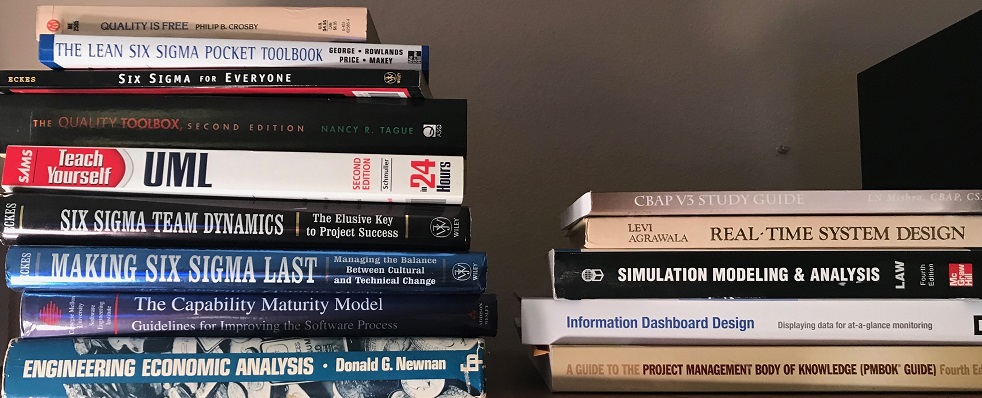
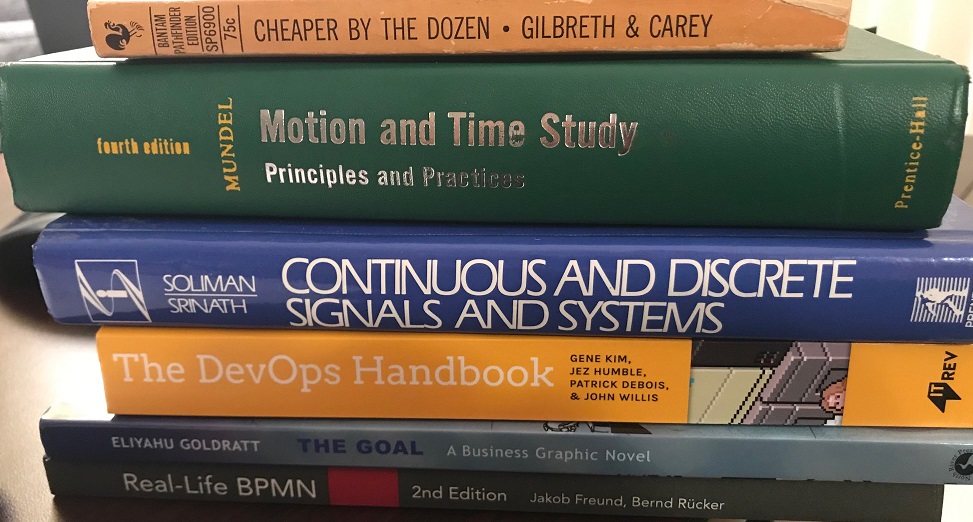
Facts and Fallacies of Software Engineering describes 50 years of incremental advance.
This presentation and other information can be found at my website:
E-mail: bob@rpchurchill.com
LinkedIn: linkedin.com/in/robertpchurchill